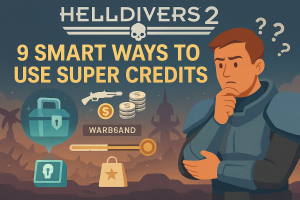Promoting Creative Play in Babies and Toddlers
In the intricate and ever-evolving world of babies and toddlers, each fleeting moment holds the potential for a learning experience, a unique adventure waiting to unfold. These early years are marked by rapid cognitive, physical, and emotional growth. Infants transform from passive observers to active participants in their environment, their minds teeming with curiosity and wonder. Toddlers explore, experiment, and test boundaries as they begin to make sense of the world around them. Our role in this transformative phase is to inspire, stimulate, and cultivate these young minds.
To illustrate, consider the journey of a seed. Left alone, it may sprout and grow, but the right conditions—ample sunlight, nurturing soil, and regular watering – will ensure that it thrives. In this analogy, children are the seeds, their potential is immense and inherent. As caregivers, we provide the right conditions that allow them to flourish. Promoting creative play is one of the best methods to do this. This blog post will guide you through some effective strategies to promote creative play in babies and toddlers, with a focus on creative play activities for kids, creative expression activities for toddlers, creative art activities for infants, and even some free lesson plans for infants 0–12 months.
Benefits of Creative Play
The benefits of creative play are manifold. Here’s a closer look at how it positively impacts a child’s development:
Cognitive Development: Creative play enhances problem-solving abilities, encourages curiosity, and fosters innovative thinking. It helps children understand the world around them and enables them to connect and apply what they’ve learned in different contexts.
Physical Development: Whether it’s manipulating playdough or dancing to a song, creative play activities often involve fine and gross motor skills, helping children improve their physical coordination and strength.
Emotional Development: Creative play provides children with a safe environment to express their feelings and emotions. It helps them understand different emotions & enhances emotional intelligence in kids.
Social Development: During creative play, children learn to cooperate, share, take turns, and navigate social situations. They develop empathy by understanding different perspectives and learn to communicate their thoughts and ideas effectively.
Language Development: Whether they’re narrating a story or singing along to a song, creative play encourages children to practice and expand their language skills.
Creative Play Activities for Kids
Sensory Play: Playing with sensory stimuli engages a child’s touch, smell, taste, sight, and hearing senses. For babies and toddlers, sensory bins filled with different textures (e.g., rice, water beads, sand) provide endless opportunities for exploration and imaginative play.
Outdoor Play: The natural world is the ultimate playground. Encourage children to engage with the environment – let them feel the grass under their feet, collect leaves, or observe bugs. These experiences not only promote creativity but also foster a love for nature.
Role Play: Toddlers love to imitate adults. Role-playing games like grocery shopping, cooking, or running a restaurant are fantastic ways to boost their creativity and improve their social skills.
Creative Expression Activities for Toddlers
Music and Movement: Music naturally encourages toddlers to move and express themselves. Dance parties, singing sessions, and musical instruments can help toddlers explore rhythm, sound, and motion.
Storytelling: Storytelling is a wonderful way for toddlers to express their thoughts, emotions, and ideas. Encourage your toddler to create their own stories using toys, puppets, or even through drawings.
Messy Play: Don’t be afraid of a little mess. Activities like finger painting for kids, playdough sculpting, and water play are not only fun but also allow toddlers to experiment with different materials and textures.
Creative Art Activities for Infants
Baby-Safe Painting: Non-toxic, edible paints are perfect for infants. Spread a sheet of paper on the high chair tray or the floor, and let your baby explore the feel and texture of paint.
Textured Toys: Create homemade toys with different textures for your infant to explore. You can use fabrics, ribbons, or even safe household items. Always supervise these activities to ensure safety.
Mirror Play: Safe, unbreakable mirrors can provide hours of fascination for infants. Mirrors help babies explore their reflections and expressions, promoting self-awareness and creativity.
Free Lesson Plans for Infants 0-12 Months
In the first year, infants learn to engage with the world around them. Below are some free lesson plans that can stimulate their senses and nurture their creativity.
Object Exploration: Introduce different objects with various textures, colors, and shapes. Observe how your infant interacts with each object.
Tummy Time Art: During tummy time, place colorful art pieces or books around your infant. This encourages visual exploration and strengthens their neck and shoulder muscles.
Sound Discovery: Make a simple “sound discovery” box with various safe objects that make different sounds. Rattles, bells, and musical toys can be used. Shake each object and let your infant listen to the sound it makes.
Sensory Bags: Fill ziplock bags with different materials like water beads, hair gel, or sand. Seal them securely and let your infant squish and explore these sensory bags under supervision.
Simple Peekaboo: A game of peekaboo using a soft blanket or toy can encourage your infant’s curiosity and foster a sense of object permanence.
Conclusion
Every child is unique and will interact with these activities in their own way. The goal is not to achieve a perfect end product but to foster a creative, inquisitive mindset. It’s important to provide an encouraging and patient environment where children can explore freely. Avoid stepping in too quickly to help or correct them; instead, let them figure things out on their own.
By fostering creative play, we are not only promoting their cognitive development but also nurturing their ability to think independently, solve problems, and express themselves. With these strategies, creative play activities for kids, creative expression activities for toddlers, creative art activities for infants, and free lesson plans for infants 0-12 months, we hope you are equipped with an arsenal of knowledge to facilitate your child’s creative journey. Happy playing!
We hope that you found this blog insightful and useful. If you wish to learn more, head over to our blogs section. In case you want to understand our carefully curated curriculum in detail, do visit a EuroKids centre nearest to your house!





